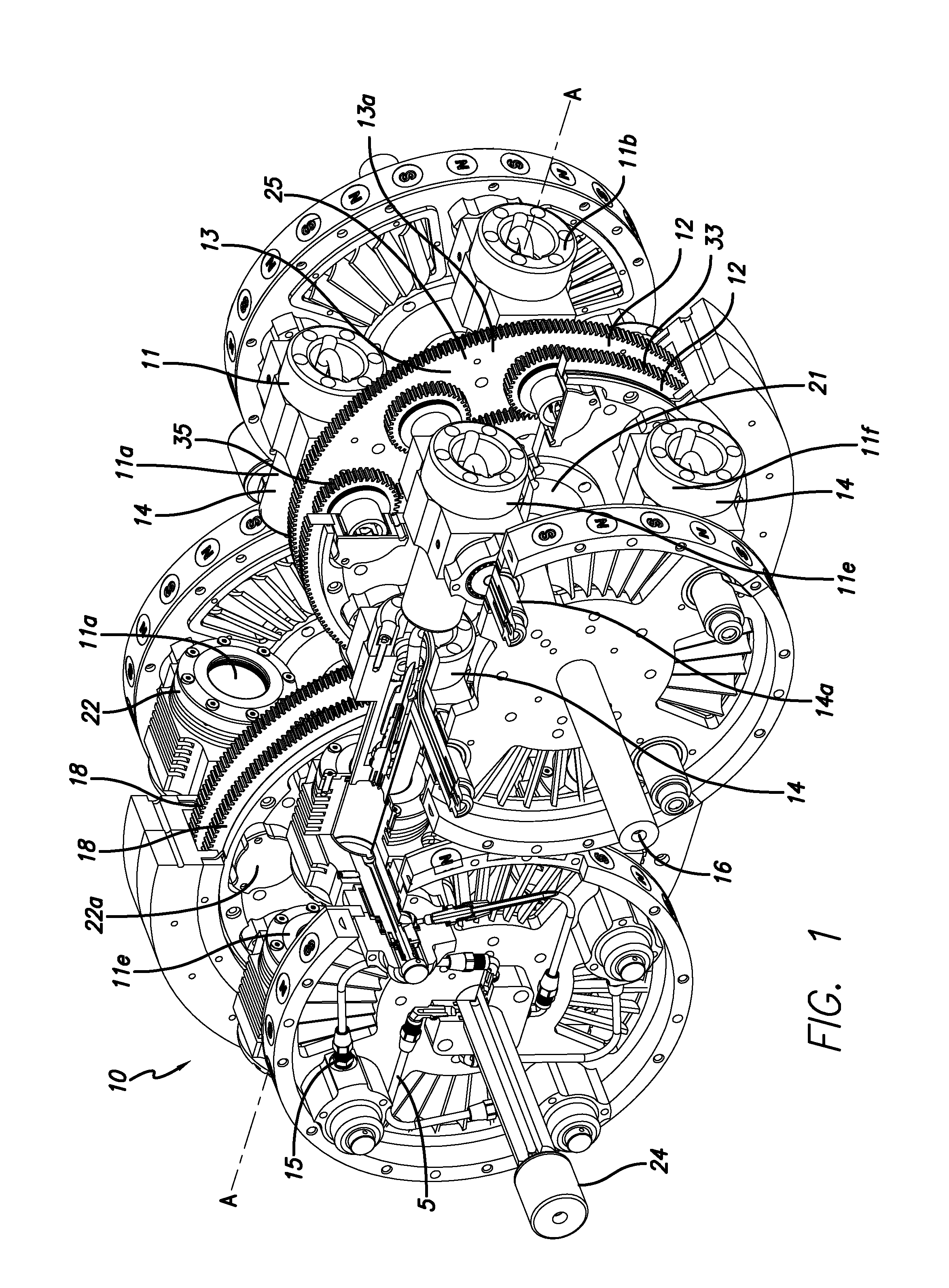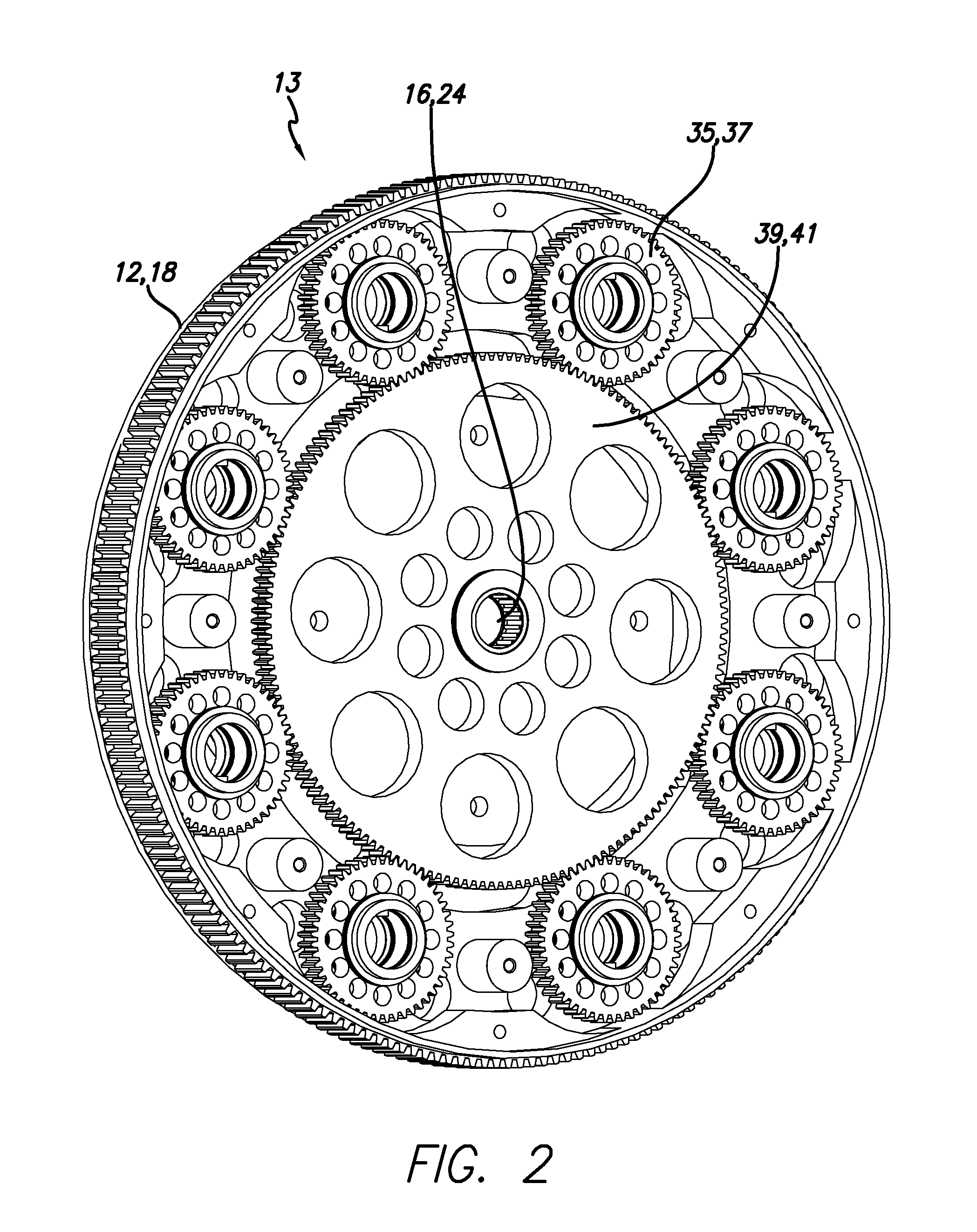Orbital, non-reciprocating, internal combustion engine
- Summary
- Abstract
- Description
- Claims
- Application Information
AI Technical Summary
Benefits of technology
Problems solved by technology
Method used
Image
Examples
Embodiment Construction
[0033]With reference now to the drawings in detail, and particularly FIGS. 1-7, a combustible fluid operated orbital engine is shown at 10 comprising plural sets 11 of cooperating cylinder members 22 and piston members 14 arranged at all times in opposed relation on a common longitudinal axis A-A for orbital motion along intersecting counter paths 18a, 12a defined by respective cylinder and piston carrier or drive wheels 12, 18. A gearing structure 13 also carried by the carrier wheels 12, 18 and best shown in FIGS. 1 and 2 serves to rotate the cylinder and piston members 22, 14 counter to their circular motion along paths 18a, 12a whereby their common longitudinal axis A-A relation is maintained despite the wheels circular travel. That is, cylinder and piston members 22, 14 are being carried circularly on their respective carrier wheels 12, 18, See FIG. 7, about axles 24, 16, respectively, but gearing structure 13 acts to rotate the cylinders and piston members about their respecti...
PUM
 Login to View More
Login to View More Abstract
Description
Claims
Application Information
 Login to View More
Login to View More - R&D
- Intellectual Property
- Life Sciences
- Materials
- Tech Scout
- Unparalleled Data Quality
- Higher Quality Content
- 60% Fewer Hallucinations
Browse by: Latest US Patents, China's latest patents, Technical Efficacy Thesaurus, Application Domain, Technology Topic, Popular Technical Reports.
© 2025 PatSnap. All rights reserved.Legal|Privacy policy|Modern Slavery Act Transparency Statement|Sitemap|About US| Contact US: help@patsnap.com



